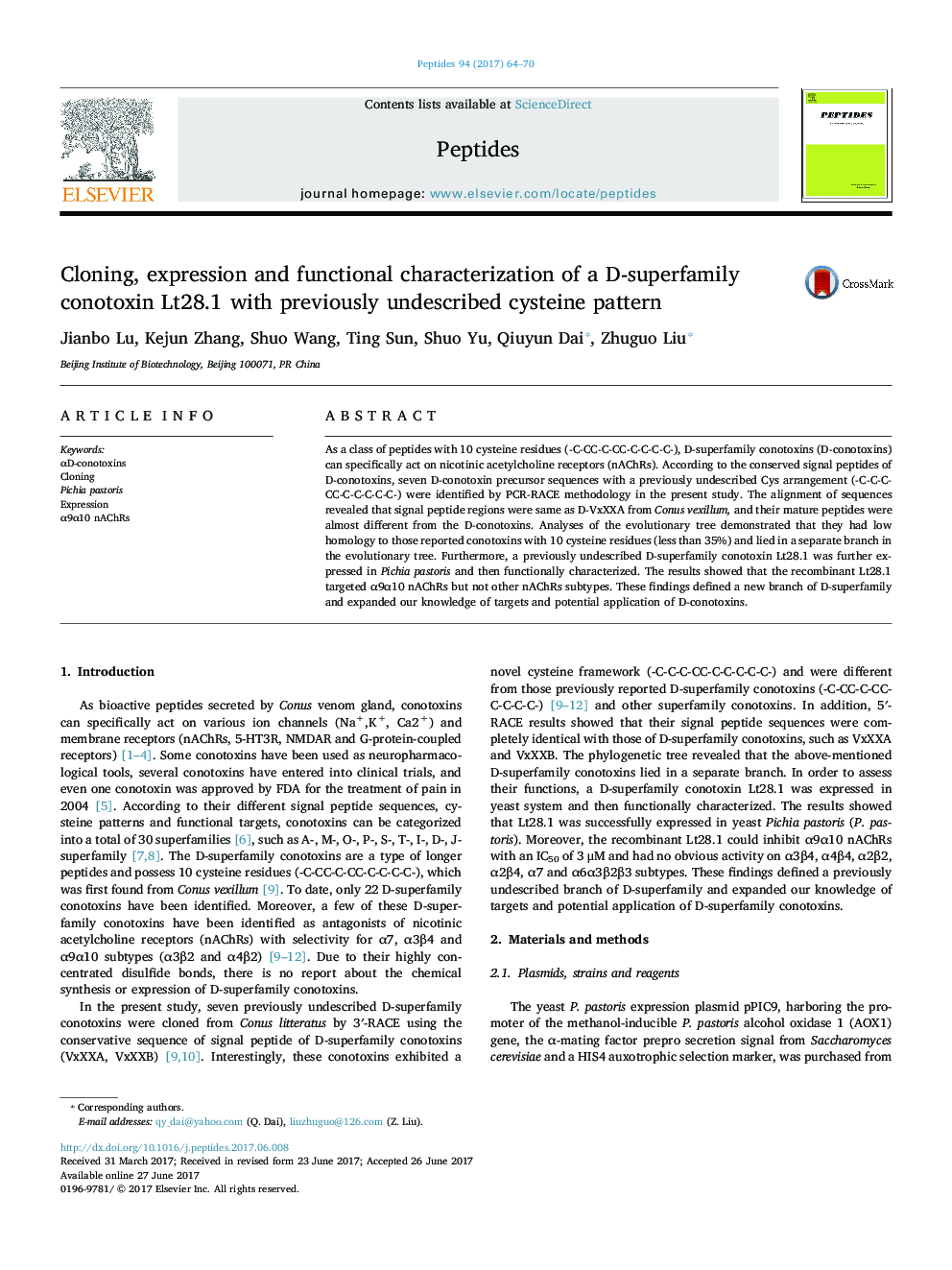| Article ID | Journal | Published Year | Pages | File Type |
|---|---|---|---|---|
| 5514604 | Peptides | 2017 | 7 Pages |
â¢7 novel D-superfamily conotoxins with new cysteine framework were cloned from Conus litteratus.â¢They had low structural similarity (<35%) to the reported conotoxins with 10 cysteine residues and lied in a separate branch in the evolutionary tree.â¢A novel D-superfamily conotoxin Lt28.1 was further expressed in Pichia pastoris.â¢Lt28.1 targeted α9α10 nAChRs but not other nAChRs subtypes.
As a class of peptides with 10 cysteine residues (-C-CC-C-CC-C-C-C-C-), D-superfamily conotoxins (D-conotoxins) can specifically act on nicotinic acetylcholine receptors (nAChRs). According to the conserved signal peptides of D-conotoxins, seven D-conotoxin precursor sequences with a previously undescribed Cys arrangement (-C-C-C-CC-C-C-C-C-C-) were identified by PCR-RACE methodology in the present study. The alignment of sequences revealed that signal peptide regions were same as D-VxXXA from Conus vexillum, and their mature peptides were almost different from the D-conotoxins. Analyses of the evolutionary tree demonstrated that they had low homology to those reported conotoxins with 10 cysteine residues (less than 35%) and lied in a separate branch in the evolutionary tree. Furthermore, a previously undescribed D-superfamily conotoxin Lt28.1 was further expressed in Pichia pastoris and then functionally characterized. The results showed that the recombinant Lt28.1 targeted α9α10 nAChRs but not other nAChRs subtypes. These findings defined a new branch of D-superfamily and expanded our knowledge of targets and potential application of D-conotoxins.
